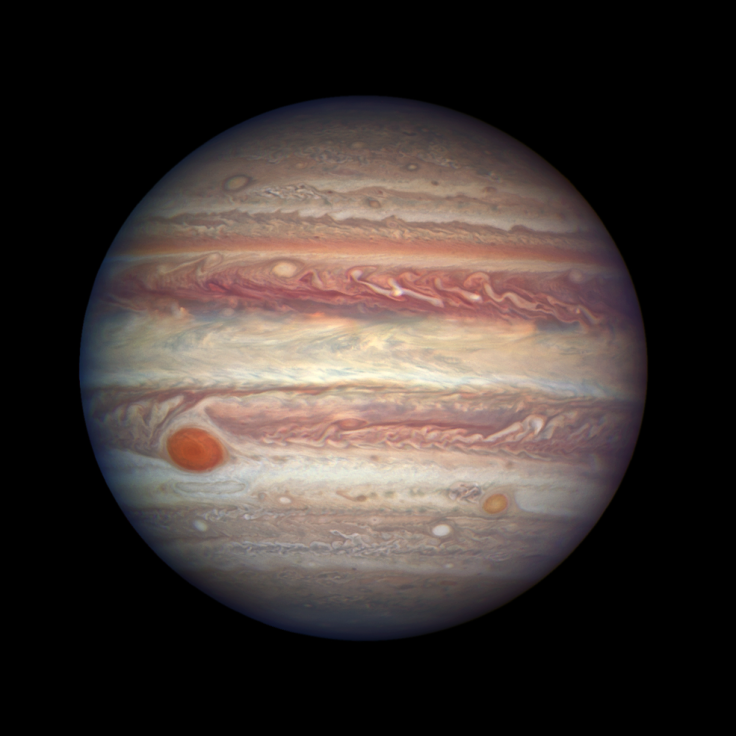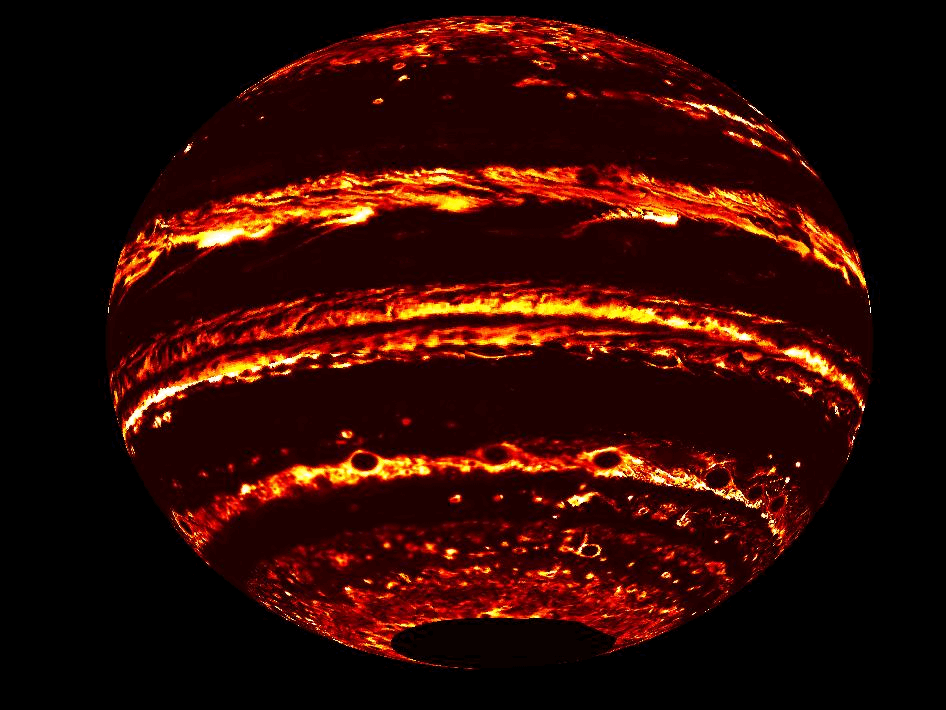Nasa Juno mission: Incredible huge cyclones and spectacular auroras on Jupiter revealed
Scientists have also found out more about Juno's gravitational field.

The first in-depth results of NASA's mission to Jupiter are out, and they shed light on its atmosphere and interior – leading scientists to reconsider many of their assumptions in the process.
The Juno spacecraft launched in 2011 but only started its first orbit last year, making its first close pass around the gas giant in August 2016. Passing over the Jupiter's poles and diving within 5,000 kilometres of its cloud tops, Juno has allowed scientists to study the planet in unprecedented details.
The first findings to date of the Juno mission have been published in Science and Geophysical Research letters.
In a first paper, researchers have described chaotic and bright oval features that appear to hover over Jupiter's polar regions. A time-lapse of the images captured by Juno has revealed that these oval features are in fact massive cyclones – some of which reach diameters of 1,400 km across.
Next, analyses of the thermal structure of Jupiter's deep atmosphere have revealed that ammonia is emerging from the deep atmosphere and forming giant weather systems.
Take our quizz: How much do you know about NASA's Juno mission
The Juno Mission also retrieved crucial information regarding Jupiter's gravitational field. Models have predicted that the planet has a solid core but to confirm this, and to improve our understanding of its structure, it is important to get data about its gravitational field.
What the researchers found surprised them. Close to the planet, the gravitational field appeared to be much stronger than what they had hypothesised – about ten times greater than that of our planet.

In a second paper, the scientists studied the phenomenon of auroras on Jupiter. They also described its magnetosphere - the area where the planet's magnetic field dominates over the solar wind.
Juno has captured ultraviolet and infrared images of huge auroras, which could be powered by electron beams. Indeed scientists have been able to identify downward-travelling electron beams that shower energy into Jupiter's upper atmosphere.
However, the electron beams appear to have a different distribution from those that occur on Earth, suggesting that the formation of auroras might be different on Jupiter. This suggests a radically different conceptual model of Jupiter's interaction with its space environment, the scientists write.
Finally, they also found evidence that Jupiter's magnetosphere was expanding in size at the time Juno surveyed it.
You can watch scientists discuss the recent findings on NASA's channel at 7PM UK time on 25 May 2017.
© Copyright IBTimes 2025. All rights reserved.






















